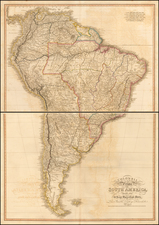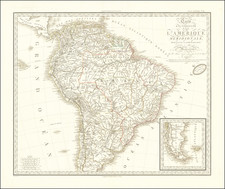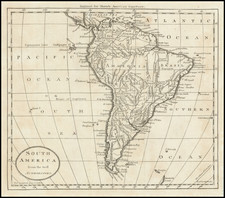Rare Le Rouge plan of the siege of Cartagena (Cartagena de Indias), by the Vice-Admiral Vernon , in 1741, probably drawn after Harding and Toms chart, and published the same year.
The Siege was a massive amphibious military engagement between the forces of Britain under Vernon and Spain under Admiral Blas de Lezo and Viceroy Sebastián de Eslava in March 1741. It was the most significant battle in the War of Jenkins' Ear and one of the largest naval campaigns in British history. The battle ended in a major defeat and heavy losses for the British: 50 ships lost, badly damaged or abandoned for lack of crew and losses of 18,000 soldiers and sailors, mainly due to disease.
Le Rouge's plan shows the positions of the British and Spanish troops and the boats sunken by Blas de Lezo. The cartography and iconography of the siege of Cartagena is very rich, in large part due to the fact that the British started to celebrate the victory of the battle before learning that it had been a failure.
Includes a key of approximately 20 battle notes, along with forts, batteries, ships in the harbor and off the coast, soundings and other details.
The map is very rare. OCLC locates only the copy in the Bibliotheque Nationale de France. The map has not appeared at in a dealer catalogue or auction record noted by AMPR for more than 25 years.
George-Louis Le Rouge (1712-1790), though known for his work in Paris, was originally born Georg Ludwig of Hanover, Germany. He grew up and was educated in Hanover, after which he became a surveyor and military engineer. Around 1740, however, Le Rouge moved to Paris and set up shop as an engraver and publisher on the Rue des Grands Augustins. It was at this time that he changed his name, adopting a French pseudonym that would later become quite famous.
Le Rouge spent much of his forty-year career translating various works from English to French, and his cartographic influence often came from English maps. His experience as a surveyor and engineer in Germany made him a skilled and prolific cartographer, and he produced thousands of charts, maps, atlases, and plans. His work spans from garden views and small-town plans to huge, multiple-continent maps. Le Rouge eventually accepted the position of Geographical Engineer for Louid XV, the King of France.
Later in life, Le Rouge became well-known for publishing North American maps, such as in his Atlas ameriquain septentrional of 1778. One of Le Rouge’s other more famous works is the Franklin/Folger chart of the Gulf Stream, which he worked on with Benjamin Franklin. Franklin and Le Rouge corresponded around 1780 and collaborated to create this map, a French version of Franklin’s famous chart which was originally printed in 1769.









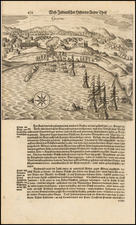
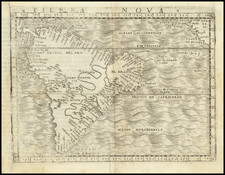
![The Coast of Newfoundland From Plancentia to Cape Bonavista [and] A Draught of the River Plata in South America [and] Havana, Harbour [and] the Bay of Honda](https://storage.googleapis.com/raremaps/img/small/38599.jpg)
